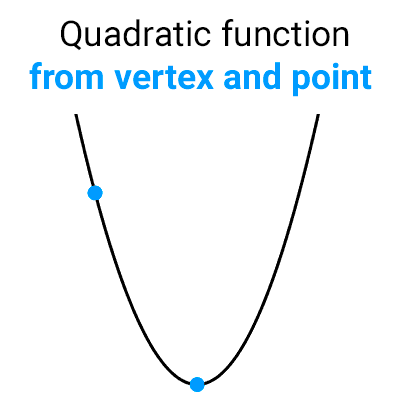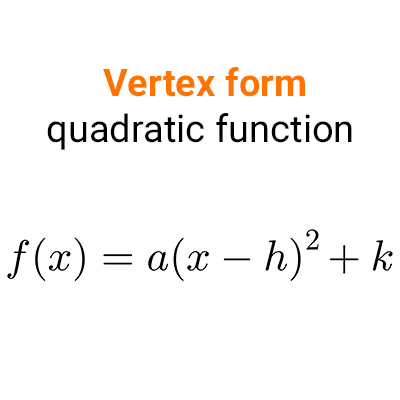
How to find the Vertex of a quadratic function
In this article we explain how to find the vertex of a quadratic function and some practical step-by-step examples.
Table of Contents
What is the vertex?
The vertex of a quadratic function is the lowest or highest point on its graph. We know that the graph is a parabola. If it opens upwards, it will have a point lower than all others; if it opens downwards, it will have a point higher than all others.
The vertex is also the point of inflection where the function changes from increasing to decreasing, or vice versa. From the vertex, you can determine the axis of symmetry of the function, a line that divides the parabola into two symmetrical parts.
Formulas to calculate the vertex
Let *f(x)=ax^2+bx+c* be a quadratic function. The vertex *V* of the function has coordinates *(h, k)* where:
*h=\dfrac{-b}{2a}*
*k=f(h)*
If *a>0,* the vertex is a minimum of the function. If *a<0,* the vertex is a maximum.
Solved exercises
Exercise 1: Find the vertex of the function *f(x)=-2x^2+8x-5* and determine if it is a maximum or minimum.
Solution:
Identify the coefficients needed: *a=-2, b=8* and substitute them into the vertex formula:
*h=\dfrac{-b}{2a}=\dfrac{-8}{2\cdot(-2)}=\dfrac{-8}{-4}=2*
*k=f(h)=f(2)=-2(2)^2+8(2)-5=3*
Therefore, the vertex of *f* is *V=(2,3).* Since *a* is a negative number, the vertex corresponds to the maximum of the function.
Exercise 2: Determine the vertex of the function *f(x)=\dfrac{3}{4}x^2-2x+9*
Solution:
Identify the coefficients to be used: *a=\dfrac{3}{4}, b=-2* and substitute them into the formula:
*h=\dfrac{-b}{2a}=\dfrac{-(-2)}{2\cdot\dfrac{3}{4}}=\dfrac{2}{\dfrac{3}{2}}=\dfrac{4}{3}*
*k=f(h)=f\left(\dfrac{4}{3}\right)=\dfrac{3}{4}\cdot\left(\dfrac{4}{3}\right)^2-2\cdot\left(\dfrac{4}{3}\right)+9=\dfrac{23}{3}*
The vertex is then *V=\left(\dfrac{4}{3},\dfrac{23}{3}\right).* Since *a* is a positive number, the vertex corresponds to a minimum of the function.
Exercise 3: Calculate the vertex of the function *f(x)=x^2+3* and determine if it is a minimum or maximum.
Solution:
In this case, we have an incomplete quadratic function, as one of the coefficients is zero. Extract the coefficients to be used: *a=1, b=0* and calculate the coordinates of the vertex:
*h=\dfrac{-b}{2a}=\dfrac{-0}{2\cdot1}=0*
*k=f(h)=f(0)=(0)^2+3=3*
The vertex is *V=(0,3)* and, since *a* is positive, it corresponds to the minimum of *f.*
Exercise 4: Calculate the vertex of the function *f(x)=-6x^2*
Solution:
Again, we have an incomplete quadratic function, as two coefficients are zero. Identify the coefficients to be used: *a=-6, b=0* and substitute them into the formula:
*h=\dfrac{-b}{2a}=\dfrac{-0}{2(-6)}=0*
*k=f(h)=-6(0)^2=0*
So, the vertex is *V=(0,0)* and corresponds to a maximum since *a* is a negative number.






Other articles that may interest you